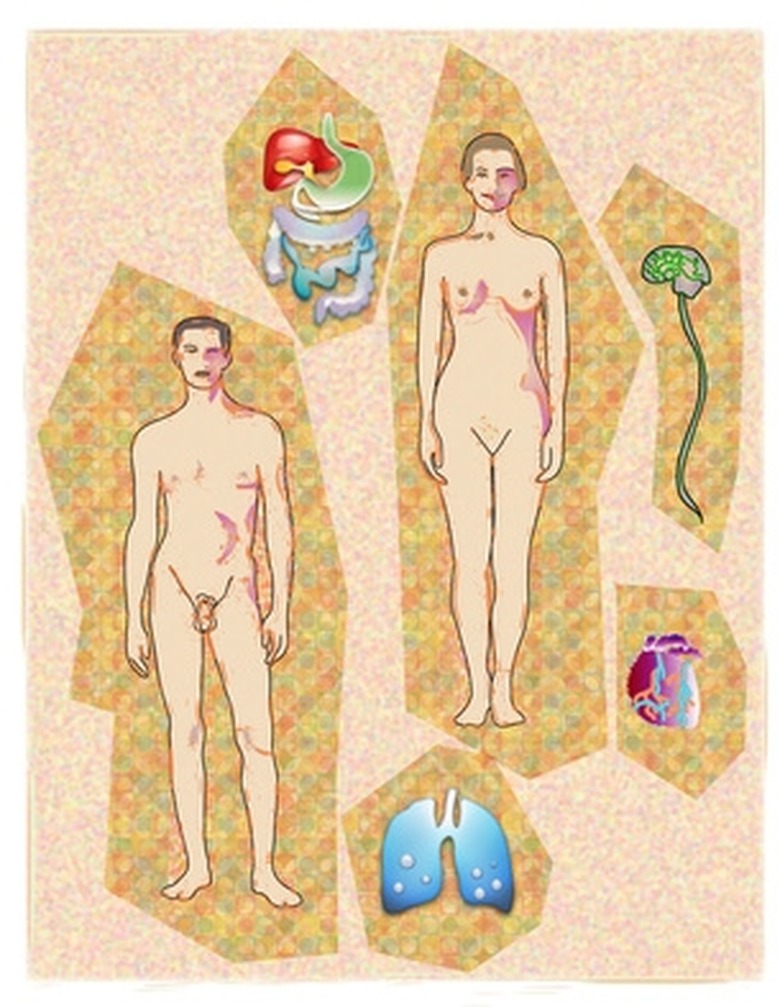Human Body Structural Levels Of Organization
The structural levels of organization determine the different levels of development in the human body, specifically during their growth during pregnancy. The human body is organized from the lowest form of development, which is marked by conception, to the highest, which is characterized by the body's completed basic development just before birth.
Chemical Level
Chemical Level
When it comes to the human body, it doesn't get any smaller than the chemical level. This is the level reserved for the building blocks of human life, including atoms and molecules, which combine to make organelles, which determine cell function. These functions can include cell membranes, mitochondria and ribosomes.
Cellular Level
Cellular Level
The cells of the human body are the functional units of life. When a human life begins, it starts as a single cell and grows as those cells multiply through mitosis, which makes sure the cellular structure established by the single cell is replicated over and over again and that the body gets a full set of 46 chromosomes. The other major function on the cellular level is cellular differentiation, which facilitates the specific functions of cells and genes in the human body. Cellular differentiation is why one person has blond hair and another has red hair.
Tissue Level
Tissue Level
This is when similar types of cells come together to form tissue in the body. There are four distinct types of tissue. Epithelial tissue is the skin that covers the body. Connective tissue includes blood, cartilage and bone. Muscular tissue produces force, causes motion and gives the body definition. Neural tissue allows electrical impulses to travel throughout the human body.
Organ Level
Organ Level
When tissues of a similar type come together during the body's development, they form organs. Most organs contain all four types of the tissues mentioned earlier. Organs usually form to perform a specific function, which can include everything from blood movement (the heart) to waste management (the liver and kidneys) to reproduction (male and female sex organs).
System Level
System Level
This is the highest level of the levels of structural organization in the human body. All of the previous building blocks come together to form systems that perform specific human functions. These organ systems include the cardiovascular system (blood flow), the gastrointestinal system (body waste) and the skeletal system (human bones). In all, the human body has 11 organ systems.
References
Cite This Article
MLA
Chancellor, T.L.. "Human Body Structural Levels Of Organization" sciencing.com, https://www.sciencing.com/human-body-structural-levels-organization-5628265/. 24 April 2017.
APA
Chancellor, T.L.. (2017, April 24). Human Body Structural Levels Of Organization. sciencing.com. Retrieved from https://www.sciencing.com/human-body-structural-levels-organization-5628265/
Chicago
Chancellor, T.L.. Human Body Structural Levels Of Organization last modified March 24, 2022. https://www.sciencing.com/human-body-structural-levels-organization-5628265/
